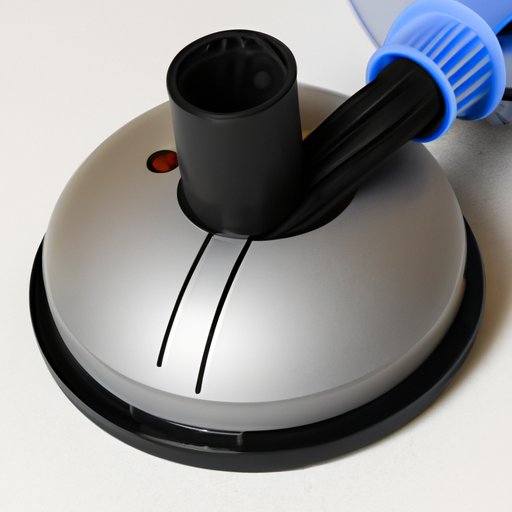Introduction
Vacuums are one of the most essential tools for keeping our homes clean and tidy. But have you ever wondered exactly how they work? In this article, we will explore the mechanics and physics behind vacuum cleaners – from how they create suction to what goes on inside the machine.
Step-by-Step Guide to Understanding How Vacuums Work
Let’s start with the basics: how does a vacuum cleaner create suction? Suction is created when air is forced through an opening in the vacuum cleaner. This creates a low-pressure area inside the machine, which then draws in dirt and debris from the floor.
Now let’s take a look at the different parts and functions of a vacuum. The main components of a typical vacuum cleaner include a motor, a fan, a filter, and a dust bag or container. The motor powers the fan, which is responsible for creating the suction. The filter helps to remove dust and other particles from the air, while the dust bag or container collects the debris.

The Science Behind the Suction: Exploring the Mechanics of Vacuum Cleaners
To understand how a vacuum cleaner works, we must delve into the science behind its powerful suction. The physics behind a vacuum cleaner’s suction is simple: it relies on Bernoulli’s principle, which states that as the speed of a fluid increases, its pressure decreases. In the case of a vacuum cleaner, air is forced through an opening in the machine, creating a low-pressure area that draws in dirt and debris from the floor.
Now let’s take a closer look at what goes on inside a vacuum cleaner. Inside the machine, there are several components that work together to create the suction. The fan is responsible for drawing in air, while the filter traps dust and other particles. The dust bag or container collects the debris and the motor powers the fan. All these components work together to create the powerful suction necessary to remove dirt and debris from your floors.
Conclusion
In this article, we explored the mechanics and physics behind vacuum cleaners. We started by looking at how a vacuum cleaner creates suction, before examining the different parts and functions of a vacuum. Finally, we took a closer look at the science behind the suction, exploring the components and processes that go on inside the machine.
We hope that after reading this article, you now have a better understanding of how vacuums work. Armed with this knowledge, you can make informed decisions when it comes to choosing the right vacuum cleaner for your home.
Summary of Key Points
- Suction is created when air is forced through an opening in the vacuum cleaner, creating a low-pressure area inside the machine.
- The main components of a typical vacuum cleaner include a motor, a fan, a filter, and a dust bag or container.
- The physics behind a vacuum cleaner’s suction relies on Bernoulli’s principle, which states that as the speed of a fluid increases, its pressure decreases.
- Inside the machine, the fan draws in air, the filter traps dust, the dust bag or container collects the debris, and the motor powers the fan.
Final Thoughts
Vacuums are essential tools for keeping our homes clean and tidy. Knowing how they work can help us make informed decisions when it comes to choosing the right vacuum cleaner for our needs. We hope that this article has provided you with a better understanding of the mechanics and physics behind vacuum cleaners.


